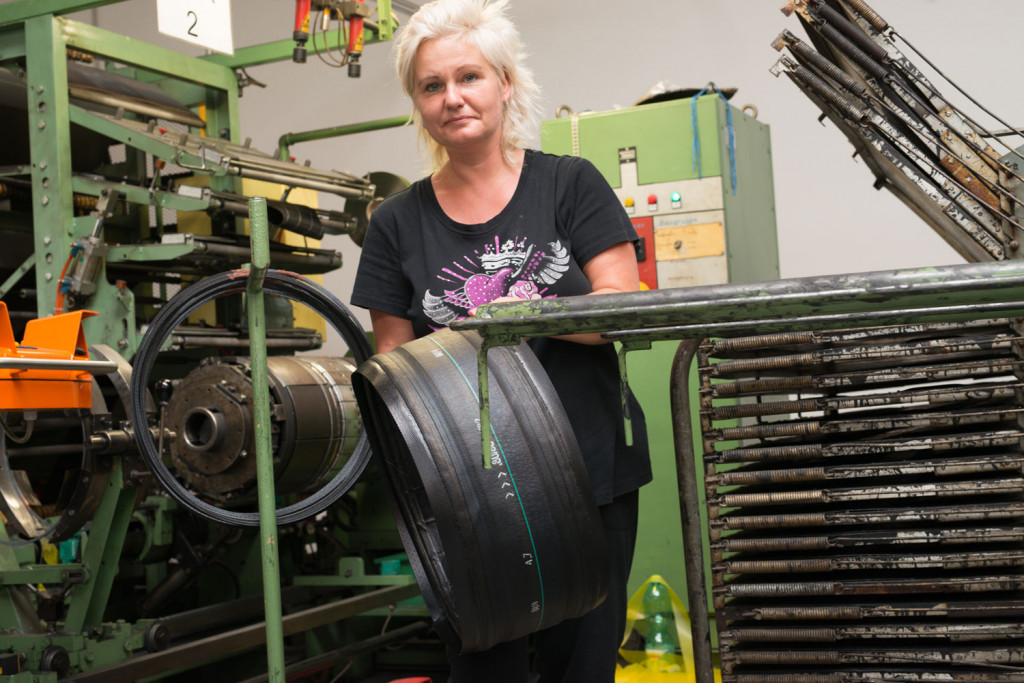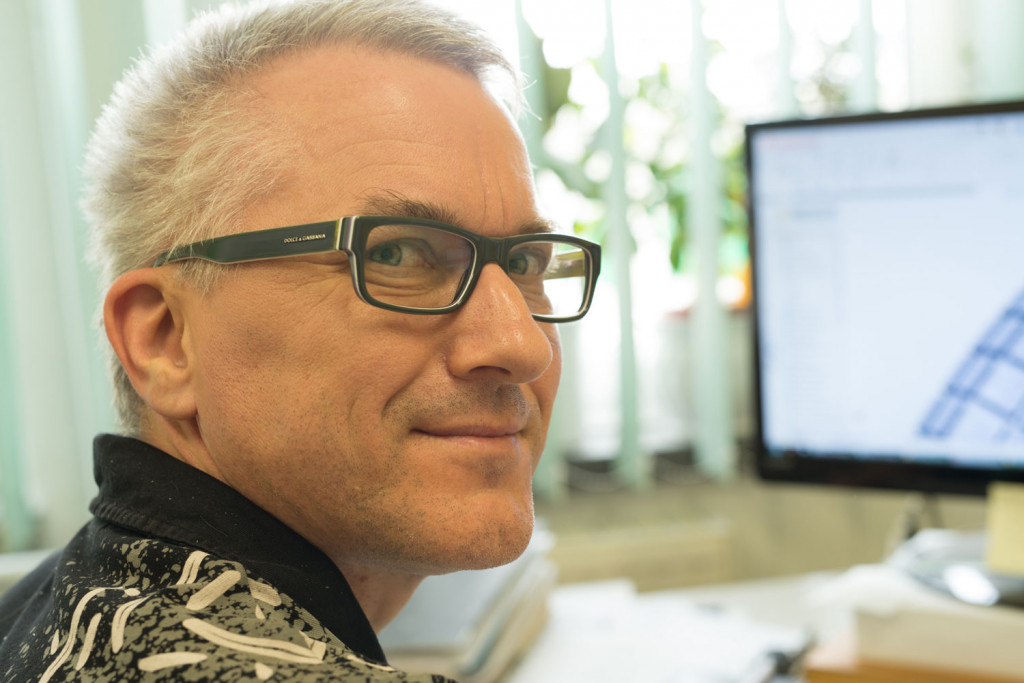
Proven tires from Saxony: 150DXP tires per day are made by hand

"KYBURZ had special requirements. It was particularly tricky to combine the wide contact patch with the narrow rim."
René Kaiser from Reifenwerk Heidenau
Attentive work is in demand
Rubber is a natural product made of caoutchouc. From each batch of raw material delivered, a sample is tested in our in-house test laboratory for factors such as tensile strength or hardness and the batches are precisely labelled. Attentive work is required, because rubber is now simply a black mass and the different mixtures are indistinguishable from the bare eye.
Fabrics made of nylon, polyester or other materials are covered and bonded with rubber in the calender, a hall filling machine. "The invisible substructure makes up a tire, the visible profile is only the top layer," explains Thomas Schoenherr. For the protector, i.e. the outer skin of the tire visible at the end, the rubber passes through an extruder that presses the material into the desired shape with a pressure of up to 90 bar and temperatures of around 100 degrees Celsius.
Up to five wires comprise the wire cores for the tire bead on the rim. In Heidenau, in-house mechanics even produce the special tool that brings the wires together and covers them with a rubber layer.
150 DXP tyres per day - handmade
In the ready-made department, employees now assemble the prepared components of the tyre by hand to form the carcass. Ramona Greiner has been working at the tyre factory for over 20 years. "I actually know the whole tyre production process," says the woman, who has many years of experience and is used in many different ways.
"Many new dimensions have been added in recent years". Also the tyre for the KYBURZ DXP. "I like to do DXP," she says - 150 tyres are produced in her hands every day. First she wraps the soul around the drum. Two layers of fabric at different angles make up the structure. Ramona Greiner skilfully tears off the fabric strips by hand so that the shocks fit exactly. If the layers overlap, there would be an imbalance which would disturb the driving behaviour at the end.
The layers are compressed. There must be no folds or air pockets. Using a simple tool with a wheel, she checks the quality several times during production. After the two wires and the side fabric for reinforcement in the rim area, the protector is applied as the last layer. Ramona Greiner lets the drum rotate again, checks the uniformity and has produced the carcass of another DXP tyre.
Last but not least, some strokes
In all production halls of the tire plant the well-known smell of fresh rubber lies in the air. However, it smells particularly intense around the heating presses. Metal negative moulds with the tyre tread are heated with steam to around 160 degrees Celsius. The bladder, a steam-filled rubber bead, presses the blank into the mold from the inside.
So that the air can escape, there are narrow holes in the mold, which are then visible as fine hairs on the outside of the new tire. The rubber is vulcanized, or baked as the employees say. For each type of tire, precise specifications regarding pressure, temperature and duration of the process must be adhered to. Muscular heaters remove the now finished, steaming tires from the presses. However, they are not yet in stock.
Tom Weicheltstreicht with an attentive eye and a sensitive hand over each individual tire from production. Still steaming, the tires go to quality control. The consultation with colleagues is very important," he says, "because only immediate feedback can prevent rejects.
Conplete reorientation after the change
The quality must be right! Tyre factory Heidenau has been supplying tyres for KYBURZ Switzerland's electric vehicles since around 2000.
Today, more than 200 employees produce over 550 tyre designs for two and three-wheelers, classic cars, karts and special applications. What began in 1946 with the production of shoe soles developed into a large company, which in the 1980s produced 10,000 tyres a day with over 800 employees. As part of the Pneumant Group, Heidenau supplied large parts of the Eastern bloc with two-wheel tires during the GDR era.
The high quality goods could even be exported to the West. Difficult times dawned after the political change: Eastern products were no longer in demand. In 1994 the company still had only 104 employees. The takeover of the factory by leading employees and the consistent reorientation towards tyres for the emerging motor scooters in the 1990s led back to the road to success. "We do a lot of manual work in production," says Export Manager Thomas Schoenherr. "Automation is at the expense of diversity. This diversity should be preserved, because KYBURZ will continue to count on cooperation with tyre facotry Heidenau in the future.

